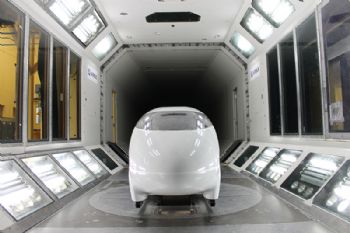
The low-speed wind tunnel at Filton, near Bristol, has just completed 60 years of aerodynamic testing and continues to be a world-leading facility, playing a critical role in the testing of new aircraft designs.
The facility, which marked its diamond jubilee in May, played a key role in the design and development of famous aircraft such as Concorde, the BAC 1-11 and — from 1982 — every new model of Airbus (including the A380, A400M, A350 XWB and Beluga XL).
Moreover, it is not just the aviation industry that has benefitted from the wind tunnel. Over the years, it has been used to test models of bridges, oil platforms, hotels, sails for ships, ski bikes for the Army, traffic lights, windmills, golf clubs and weather-proof clothing. For several years in the mid-1990s, the Ferrari Formula One racing team used the wind tunnel to test its designs.
In the 1970s, the wooden models were all hand-built by craftsmen, who used hundreds of templates, as there were no computer-aided design tools available at that time. Today’s wind-tunnel models are now 3-D printed in a matter of hours from metal powder or polymer, and they include tiny channels to measure air pressure. Wind-tunnel tests at low speeds (200mph) simulate the take-off and landing conditions for aircraft and helicopters.
Simon Galpin, head of aerodynamics at the facility, said: “Looking forward, the future appears as bright and challenging as ever. There are exciting prospects coming up to support a wide range of programme developments and research activities, including proving the next generation of wing designs.”